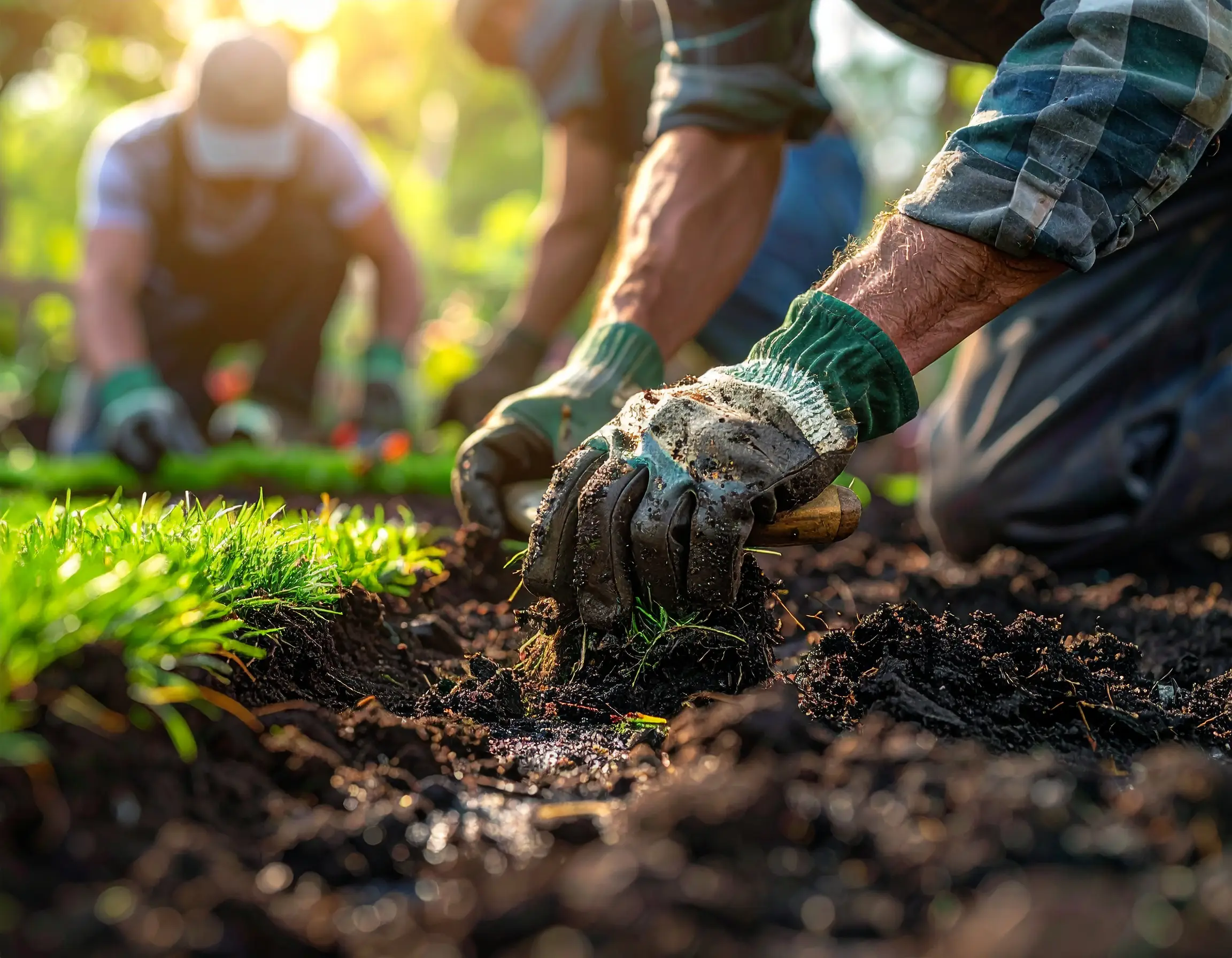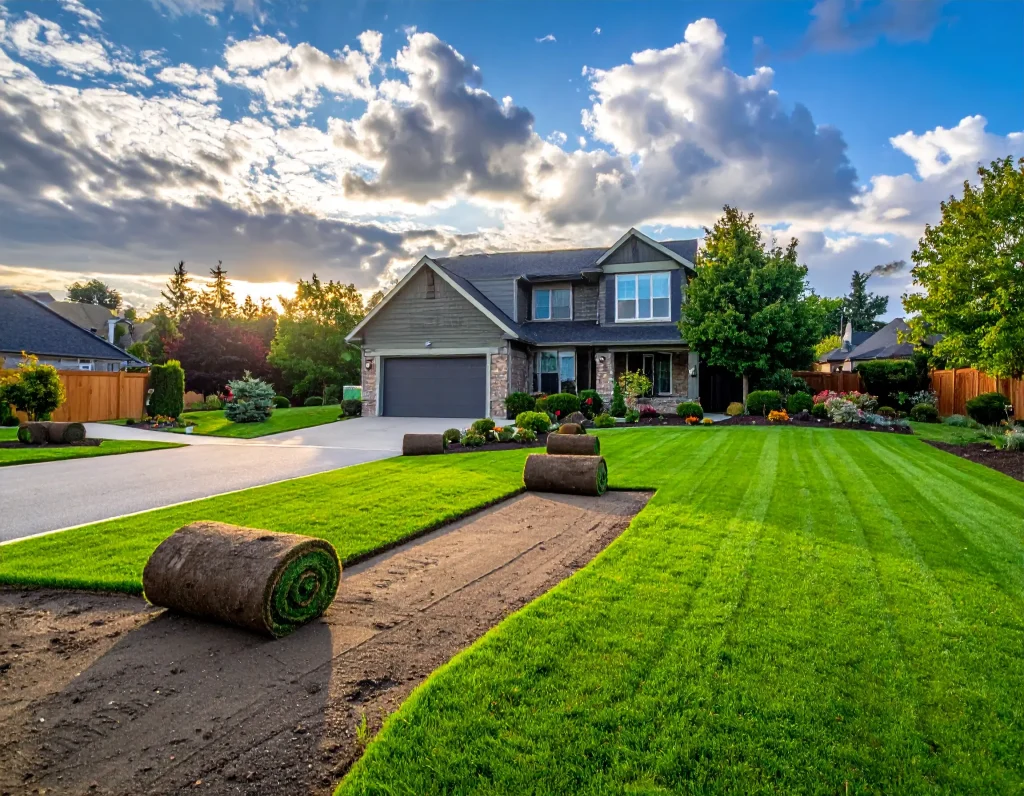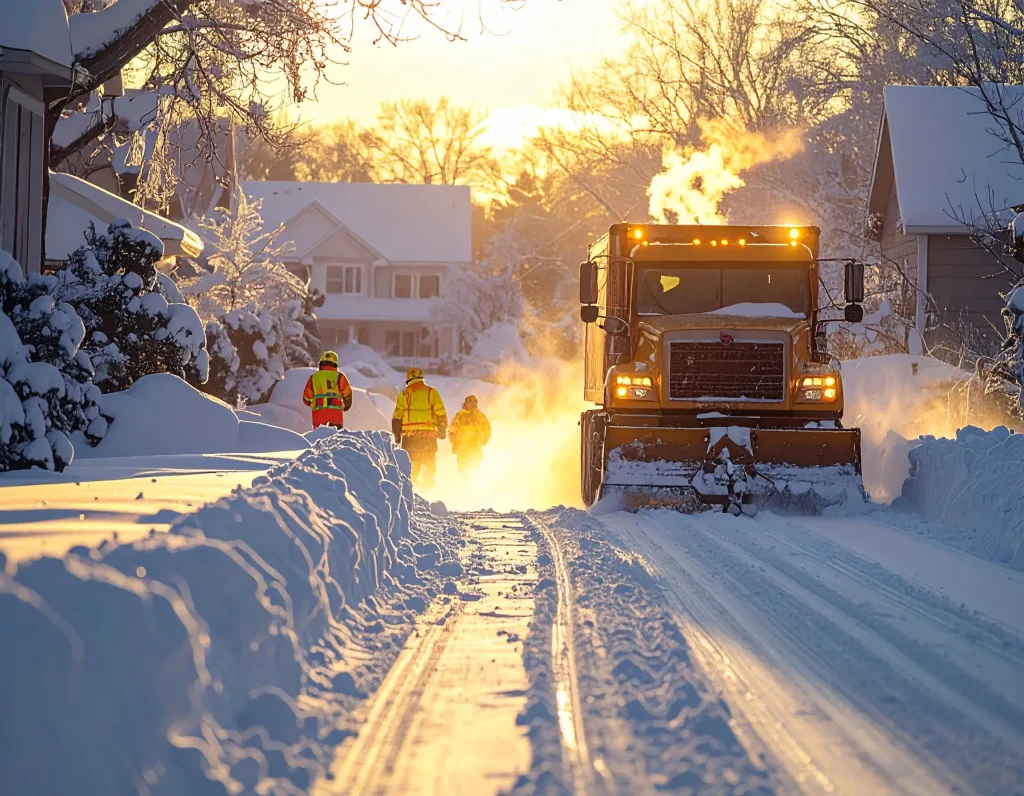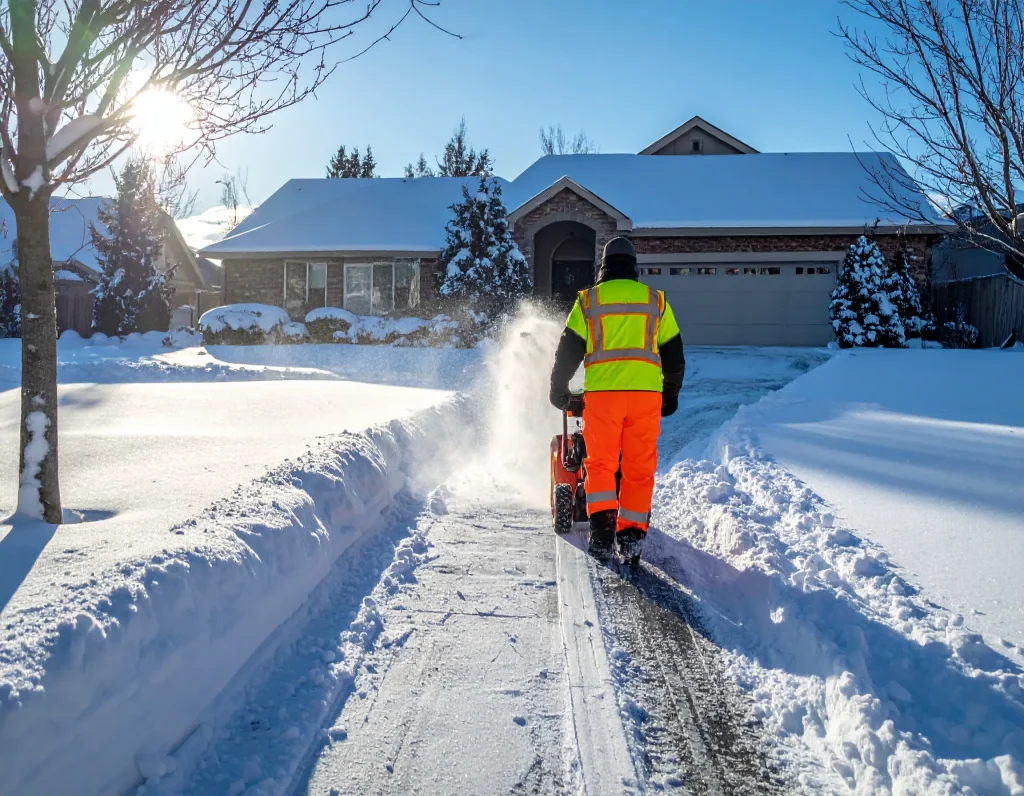Even in a lawn-proud community like Oakville, misconceptions about sodding are surprisingly common. Many homeowners hesitate to choose sod for their yard because of outdated or incorrect information. It’s time to set the record straight. Below, we debunk the top five myths Oakville residents still believe about sodding, so you can make informed decisions for a lush, green lawn.
Myth #1: “Sodding Is Too Expensive Compared to Seeding”
The Myth: Some homeowners assume that laying sod is prohibitively costly, especially when comparing the price of rolls of sod to a bag of grass seed. They believe seeding a lawn is the only budget-friendly option.
The Reality: While sod does have a higher up-front cost than seed, it often pays off in the long run. With sod, you get a mature, dense lawn almost instantly, without the patchiness or repeated overseeding that seeding often requires. In fact, experts note that when you factor in the time, watering, and potential repeat applications needed to establish a lawn from seed, the long-term costs of sod and seed end up roughly the same. Sod gives you an even, weed-free lawn from day one, saving money on weed control and lawn repairs down the road.
Moreover, a well-sodded lawn boosts curb appeal immediately – an important consideration for Oakville homeowners looking to enhance their property value. In short, sodding is a smart investment: you pay a bit more up front for instant results and fewer headaches later. Oakville landscaping professionals even note that sod is quite affordable nowadays and requires less maintenance to establish than seeding (which often struggles with erosion, weeds, and bare spots). So, don’t let the initial price tag scare you; sod can actually save you time and money by giving you a ready-made lawn that thrives with minimal retries or intensive care.
Myth #2: “Installing Sod Is Easy – It’s Just Rolling Out Grass”
The Myth: This misconception leads many to think sodding a lawn is a quick DIY project. After all, the sod comes in rolls; how hard could it be to just unroll them over your yard like a carpet? Some Oakville residents believe they can skip professional help because sod installation is “as simple as laying out a welcome mat” on the soil.
The Reality: Laying sod properly is far more involved than unrolling grass like a rug. In truth, successful sodding requires extensive preparation and labor. First, the existing lawn or weeds must be completely removed, roots and all. Next, the soil needs to be loosened, graded, and enriched with fresh topsoil so the new grass roots can take hold. Any low spots must be filled and the ground leveled to ensure proper drainage. Only then can the sod be carefully laid in staggered rows, with seams snugly fitted together. Finally, the sod must be pressed down (often with a roller) to ensure good contact with the soil and to eliminate air pockets. Each of these steps is hard work – skipping them can spell disaster for your new lawn.
Local Oakville landscapers carefully lay fresh sod with proper technique – it’s not as simple as unrolling a carpet of grass. Proper soil removal, leveling, and use of the right tools are essential for the sod to root and thrive.
Homeowners who attempt DIY sod installation often underestimate the physical effort and attention to detail required. Sod rolls are heavy, and handling them on a hot summer day can be exhausting. Improper technique (like leaving gaps, overlaps, or air pockets) can cause sections of sod to dry out or fail to root properly, leading to an uneven lawn or dead patches. “It’s hard work, and often frustrating, to lay turf yourself,” one local landscaping service explains – without proper tools and experience, there’s a real risk you might have to re-sod the yard a second time. In contrast, professional installers in Oakville have the process down to a science: they ensure the soil is well-prepared, each sod strip is laid correctly, and the end result is a seamless green carpet. The bottom line is that while sod can be installed by a determined DIYer, it’s far from “easy.” For a flawless lawn, it pays to rely on professionals who know how to avoid common sodding pitfalls and do the heavy lifting for you.
Myth #3: “Sod Can Only Be Laid in the Spring”
The Myth: Many people think there’s a very limited window for sodding – typically the springtime. According to this myth, if you miss the spring, you’ll have to wait until next year because sod supposedly won’t survive being laid in summer heat or autumn chill. This belief leads Oakville homeowners to delay improvements, assuming that sodding in July or September is a wasted effort.
The Reality: Good news – Oakville’s climate allows for a long sodding season. You do not have to restrict sod installation to spring alone. In Southern Ontario (Oakville included), sod can successfully be installed from mid-spring through late fall. It’s true that spring and early fall offer ideal conditions: cooler temperatures and regular rain help sod root with a bit less watering effort from you. However, summer sodding is entirely possible as long as you water sufficiently. In fact, local experts routinely lay sod in the hottest summer months and get excellent results, provided the new lawn is kept well-watered during those critical first couple of weeks.
Oakville Landscaping Services notes that they install sod from May all the way into November – essentially the entire growing season. There’s nothing magical about April or May; what sod needs is workable soil (not frozen) and consistent care after installation. Early fall can be an especially great time for sodding in Oakville: the soil is still warm, the air is cooler, and nature often provides some rainfall. Sod laid in September or October can establish roots before winter dormancy, then burst into growth come spring.
Even mid-summer installs are fine if you’re committed to watering (possibly with the help of an irrigation system or manual sprinklers). The only times to avoid sodding are when the ground is frozen solid or during extreme heatwaves without access to water. Other than that, you have flexibility. So if your lawn needs an upgrade, you don’t need to “wait until next spring” – you can get that fresh green lawn whenever the timing works for you, from spring through fall.
Myth #4: “New Sod Is Low Maintenance – It Doesn’t Need Much Water or Care”
The Myth: This dangerous myth comes from the idea that because sod is delivered as mature grass, it’s essentially a “ready-made lawn” that doesn’t require the kind of babying seedlings do. Some Oakville residents assume that once sod is laid down, Mother Nature will take over – regular rain should be enough, and they can sit back and relax. After all, the grass is already grown, right?
The Reality: Sod will give you a lush lawn quickly, but it isn’t set-and-forget. In fact, new sod requires diligent care, especially watering, in its first couple of weeks. Those fresh rolls of sod have shallow root systems that need to grow into your soil. Until the roots establish, the grass is vulnerable to drying out. This means frequent watering is absolutely critical after installation. Lawn care experts recommend watering new sod heavily right after installation and then at least twice daily for the first week, tapering to once daily the second week. The goal is to keep the underlying soil moist (but not waterlogged) to encourage roots to grow downward. If a newly sodded lawn doesn’t get enough water in the beginning, sections of the sod can dry up and die within hours on a hot day. So while sod spares you the months of coaxing tender grass sprouts from seed, you trade that for an intense (but short) period of focused care. The good news is it’s a labor of love that lasts only a couple of weeks – after about 14 days of consistent moisture, your sod will have started to “grab” onto the soil, and you can scale back to a normal watering routine.
It’s also a myth that sod lawns will automatically stay perfect without maintenance. True, you won’t have to deal with muddy patches or sparse coverage like you might with seed, but you still need to mow, fertilize, and occasionally weed a sodded lawn just as you would any other. For the first 2 – 3 weeks, you should avoid heavy foot traffic on the new sod (no vigorous sports or running pets) to give it time to firmly root. You can plan to mow your new sod after 10 – 14 days, once it has rooted enough that mowing won’t dislodge the strips. Use a sharp mower set to a higher setting for the first cut, so you don’t stress the young grass.
Here’s the bright side: after that initial establishment period, a well-laid sod lawn can actually become easier to maintain than a seeded lawn. Because you start with thick, healthy turf, you’re less likely to have invasive weeds or erosion problems. In fact, an established sod lawn often requires less water over time than a patchy seeded lawn, since the dense grass shades the soil and retains moisture better. So while new sod demands short-term attention, it rewards you by quickly maturing into a low-maintenance, picture-perfect lawn.
Myth #5: “Sod Isn’t Eco-Friendly (It’s Full of Chemicals and Brings Weeds)”
The Myth: A newer myth on the block, this one claims that sod farming uses lots of chemicals, and that by laying sod you’ll introduce those chemicals (or hidden weed seeds) into your yard. Some environmentally conscious homeowners fear that sod is somehow “less natural” than growing grass from seed, believing that sod is pumped up on fertilizers, pesticides, and will leach chemicals into their garden. Others assume that a roll of sod might bring along weeds or that keeping sod healthy requires more chemical lawn treatments.
The Reality: Quality sod is actually very eco-friendly and clean. In most cases, laying sod reduces the need for chemicals on your lawn, rather than increasing it. Why? Sod from reputable growers is cultivated to be weed-free and pest-resistant. For example, many Southern Ontario sod farms grow modern grass varieties like Kentucky Bluegrass, which develop dense root mats that naturally block weeds from sprouting. These grasses are often bred or selected for our climate to resist common lawn pests and diseases, meaning they don’t require heavy pesticide use to stay healthy. As a result, sod producers don’t actually need to douse their fields in chemicals – and they don’t, because it saves them money and meets consumer demand for safe, healthy lawns. One sod farm notes that thanks to dense, pest-resistant turf varieties, they have less and less need to use herbicides or pesticides to grow premium sod. The product that arrives at your home is simply thick, vigorous grass in clean topsoil.
When you install sod, you start off with a lush, weed-free lawn. This can greatly reduce your reliance on herbicides versus seeding. Think about seeding a bare yard – any existing weed seeds in the soil can germinate alongside your grass, often resulting in a weed invasion that needs chemical treatment. With sod, you avoid that scenario. You might get an isolated dandelion or two blown in on the wind over time, but those are easy to pluck out from a well-established sod lawn. Fertilizer needs are often lower, too – sod is delivered full of nutrients from the sod farm’s soil, and its established root system means it can find nutrients more efficiently than tiny seedlings can. In short, sod does not bring weeds or require excessive chemicals to keep it green. On the contrary, it gives you a strong head start against weeds and pests, reducing the need for lawn chemical interventions down the line.
Lastly, it’s worth noting some environmental benefits of sod. A healthy sod lawn contributes to local ecology by preventing soil erosion (it acts as a blanket holding soil in place) and by filtering rainwater runoff. The dense grass also produces oxygen and provides a cooling effect in summer. By quickly establishing a green ground cover, sod can protect Oakville’s watershed from sediment runoff better than bare soil or patchy new seed. It’s an immediate environmental upgrade to your property. So, if “eco-guilt” was holding you back from sodding, you can put that aside – sod done right is a friend, not a foe, to the environment.
TL:DR
Sodding your yard is one of the fastest ways to achieve a vibrant, healthy lawn – but as we’ve shown, there are plenty of myths that might have made you think twice. Now that these top misconceptions have been debunked, Oakville homeowners can move forward with confidence. Sod is an effective, flexible, and often cost-wise choice for transforming your landscape, giving you instant results without the uncertainty of seeding. Just remember: invest in proper installation and initial care, and you’ll be rewarded with a lawn that stays thick and green for years to come.
If you’re in Oakville (or the GTA area) and dreaming of a lush new lawn, don’t let myths hold you back. Talk to a local landscaping professional about your sodding project – they can guide you on timing, variety of sod, and care tips tailored to our region. With the facts in hand, you’re ready to enjoy the beauty of fresh sod, free from the fiction. Here’s to achieving the emerald-green, envy-worthy lawn you’ve always wanted – myth-free and magnificent!




















